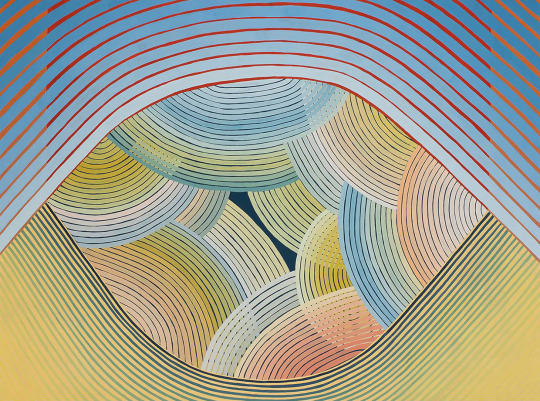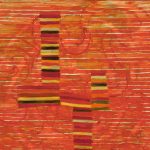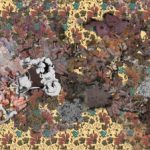Business of Art | The Arts Administrator’s Creed: 5 Guiding Principles for Your Arts Admin Career
Empowering advice from arts administrators nationwide on how to define and achieve success in your life and work.
Arts administrators work behind-the-scenes on behalf of artists and creatives everywhere, providing resources, support, and structure for their projects and practices. Often, these types of jobs combine a passion for the arts with business, management, education, programming, fundraising, or communications expertise. The work can be highly-rewarding yet also challenging in terms of budget, time, and staff constraints. To help you navigate, we’ve asked leaders in the field for their tips on how to succeed and thrive as an arts administrator.
Manage Your Time
It’s hard not to get stuck in the day-to-day and to lose perspective on the bigger picture. Avoid burnout and fatigue by recognizing that you can’t accomplish everything overnight (or by yourself!) and that there are tools and systems that can help you stay organized.
Many of the arts administrators that we spoke with make lists and use project management and time management apps to keep them on top of their workloads and priorities. Deana Haggag, President and CEO of United States Artists, writes a to-do list every Monday morning and tackles it throughout the week. “On Fridays, I audit what didn’t get done and why, so I can resolve it the following week. For reference, we use several project management apps at work—Asana, Airtable, Lattice, Slack, etc—and they’re all very helpful but nothing compares to my handwritten list. It’s the holy grail of my work week.” Haggag also schedules a few hours each day or week to respond to emails, using a ‘VIP’ inbox to filter through priority contacts so she sees those immediately.
Ben Hartley, Executive Director of The National Arts Club, keeps organization top-of-mind. “Every day, I list my priority projects and make sure they are sitting in front of me at all times. However, sometimes this can be overwhelming, so I also keep on hand a one-page overview of the big things I have to achieve this year. It’s easy to get subsumed by day-to-day detail, but if you’re not stepping back and looking at the big picture once in a while, you risk losing perspective,” he says.
Hunter O’Hanian, Executive Director and CEO of Stonewall National Museum and Archives, relies on two time management techniques: first, he prepares things well in advance and second he is a life-long list-maker who feels a strong sense of accomplishment when crossing off his “to-dos.”
“Figure out what works for you and stick with it,” advises Heather Pontonio, Senior Program Director at Emily Hall Tremaine Foundation. “I’ve tried lots of online note/task apps, but learned that I remember best when I’ve written it down — so my trusty journal notebook comes everywhere with me. I use my calendar app religiously and in addition to appointments, I include scheduled work time when there are projects that require focused attention,” she added.
Adriana Rios, Director of Programs at NALAC, takes five minutes out of every hour to stretch, breathe, or hydrate. “A tool I love using to help keep me accountable is the Focus app, which uses the Pomodoro method. In short, you set a time period (usually in increments of 25 or 55 minutes) around a certain task such as checking emails. For that time period, you focus only on that task. At the end of the allotted time, you have a five-minute break where you can do what you like. Personally, it’s helped me structure my day better and reduce distractions. It has also helped me start structuring my overall time by helping me better understand when it’s time to work and when it’s time to rest.”
Practice Self-Care
You’ll do your best work when you feel good about yourself and the value that you bring to your organization.
A lot of what Rachel Adams, Chief Curator and Director of Programs at Bemis Center for Contemporary Arts, and her curator friends say (especially as so many are now parents) is “we are not saving the world.” She explains: “This is not to say our jobs are not important, but it is important to give yourself a little life/work balance. Even if it is to take a quick walk around the block for some fresh air. Or, turn off the computer and go see that show before it closes. Read something non-work related for 20 minutes a day. Building that into your calendar really helps. Block off that time, and you’ll be happier and also can focus better on the tasks at hand when you need to.”
For Pontonio, self-care isn’t just about yoga and eating healthy, it’s about holding time for what makes you happy. “My first job was with an off-Broadway theater that led to taking an additional house management job at another off-Broadway theater to make rent. I justified the 80 hours a week because I was working in a field I was passionate about. My schedule left little time to actually enjoy theatre and on a night off it was not how I wanted to spend my time.”
Jacque Donaldson and Mara Vlatkovic, co-directors and founders of New York-based networking organization Young Professionals in the Arts (YPA), reiterate the importance of keeping your passion for the arts close and not losing sight of it. “We find it vital to remind ourselves time and again why we work in our field. Go see that concert, exhibition, theater piece, or dance performance that will reignite that spark that made you choose your profession in the first place. Knowing that we all contribute to the art world and are helping creatives achieve their potential can be one of the most rewarding jobs!”
For Ricardo Maldonado, Managing Director of Unterberg Poetry Center at the 92nd Street Y, a demanding job goes beyond the 9-to-5. “Admin gigs require one to find a space—between rooms, between tasks—for the kind of creative thinking that eventually nurtures your own creative practices. For example, before I sat down to answer these questions and after spending a good two hours processing submissions for a poetry contest I run, I gifted myself five minutes to think in response to a screen-shot of a poem I read last week and write, for an additional five, my own response. I collect screenshots and lines that I shape into the body of a poem. As a poet and translator, I am constantly surprised at how the language of work—a move toward that language, and against it—has informed the spirit of/behind (and the ethics of) my poems.”
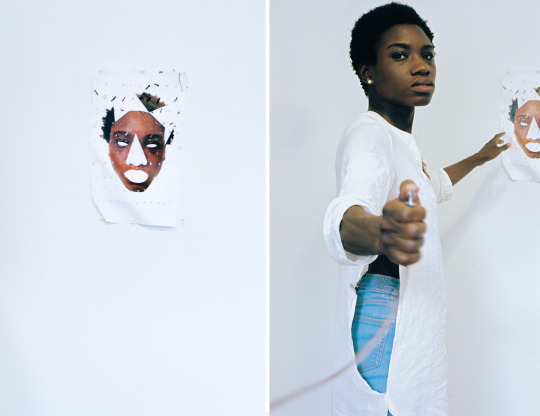
Stay Curious
Making things work better, identifying and tackling challenges, and being interested in the work that you do and the world around you are key to feeling satisfied in your job. “Always find opportunities to learn. We owe it to ourselves to be lifelong students. We owe it to the next generations to pass down our knowledge,” says Quanice Floyd, Founder and Director of the Arts Administrators of Color Network.
Rajshree Solanki, Chief Registrar for the Hirshhorn Museum and Sculpture Garden and Atelier 4’s first-ever Registrar of the Year, is interested in learning techniques on building and strengthening teams within her organization and providing others with the opportunities she was given earlier in her career (note: she donated her $5,000 award to the Smithsonian Institution’s Office of Fellowships and Internships’ Minority Internship program, which gave Solanki her start). “I tend to read business management books specifically on project management, communications, and team-building. I particularly recommend books such as Malcolm Gladwell’s The Tipping Point, Kim Scott’s Radical Candor: Be Kickass Boss without Losing Your Humanity, and Dan Coyle’s The Culture Code: The Secrets of Highly Successful Groups.”
Pontonio stays curious by proactively keeping up with conference offerings in the field that align with her work. “If there’s something of great interest and I am not attending that conference, I will reach out to the presenter afterwards to schedule a meeting about their presentation and top takeaways.”
Adams recommends inexpensive classes from Node Center for Curatorial Studies or travel scholarships for conferences like Association of Art Museum Curators (AAMC), College Art Association (CAA), and Common Field. “It’s best to get on all the email lists, specifically I like Call for Curators,” she added.
Yeiry Guevara, Grants Manager at Houston Arts Alliance, says her secret for staying up-to-date is newsletters. She recommends joining the mailing lists of Grantmakers in the Arts, NALAC, Americans for the Arts, and other cultural affairs offices, where she can learn from their layout, messaging, and content, in addition to getting relevant information from the field.
JiaJia Fei, Consulting Director of Digital at The Jewish Museum, makes staying informed a priority since success in the digital world means always keeping your eyes open and asking questions. She begins every team meeting with two agenda items to stay informed about industry changes and advancements: 1) Digital Landscape: sharing an outside project or news item from within the field and its application to the work they do and 2) Digital Cross-Fit: asking another colleague on the team a question about something they’re working on or training on a tactical skill, to encourage cross-training and collaboration. “As an added bonus, we have the privilege of working inside an art museum, which makes us all naturally curious and lifelong learners across everything we do,” says Fei.
Hartley suggests a more organic approach, and encourages you to allow serendipity and chance to play a role in your constant learning: “Sign up for LinkedIn groups, newsletters, and news-feeds that don’t relate to your work, but may provide sparks for new ideas; be a source, not a drain, if you see an interesting article, piece of research or video, share it with a friend or colleague and tell them why you found it interesting. Ask them what they’re looking at these days that’s challenging, informative or exciting.”
Donaldson and Vlatkovic also recommend looking beyond the industry to learn from others, citing resources such as The Muse, Harvard Business Review, Inc, and The New York Times’ “Smarter Living” and “Entrepreneurship” sections to find out recent trends. They then suggest learning how to apply and adapt your discoveries and learnings to the arts.
Artist Sharon Louden, who wears many hats in the arts including serving as the Artistic Director of the Visual Arts at Chautauqua Institution, believes that being curious means being open. She also dedicates time each day with a number of sources to explore what’s happening in the industry. “I love taking about 15-30 minutes a day to peruse online publications, blogs, social media to read about what people are sharing, etc. to not only follow the work of colleagues I know personally but also to see the road maps of their lives, which ultimately leads me to unexpected paths of discovery.”
This practice is also highly beneficial to Louden’s work as an artist: “Following a lot of artists’ lives tells me a lot about community, how artists sustain their own lives and ideas for opportunities for myself to grow my own practice. That kind of organic research enables me to build more of my community by reaching out to those I discover, perhaps offering to collaborate, and definitely creating spaces and opportunities for others to share as much as possible.“
Create Meaningful Relationships
We’re all in this together, so why not establish lasting ties with peers and mentors at your own and other arts and culture organizations? These relationships are mutually beneficial, and can help you chart and map your career path in ways you may not expect.
“A tip that has served me well,” says Maldonado, is “try to learn as much as you can from as many people as you can; if I’m being generous, in most of my tasks, I often remind myself that I am working with/within a language that needs to be tended to. That impulse to learn affects every curatorial decision I had made since the day I started working and pushes me to move beyond the boundaries of what’s expected. And has made me a more attentive (and kinder, I would think) administrator.”
It can also be helpful to re-frame the concept of networking. To that end, Donaldson and Vlatkovic wish “we had known at the beginning of our arts admin careers that networking simply means making connections with other people. From volunteering for organizations you believe in, going to industry events, participating in professional development workshops, or even your small friends group that meets monthly over drinks, all that engagement counts as networking! All those connections are incredibly important and will provide support throughout your career, whether it’s friends looking at your resume, acquaintances recommending you for jobs, or former colleagues sending useful articles.”
Adams suggests a proactive outreach strategy, and encourages arts administrators to reach out to people who are inspiring to you. “See if you can buy them a cup of coffee or have a phone call. Mentorship is important and establishing these relationships (whether it’s a cold call/email or through a friend of a friend) will help propel you.”
It’s important to forge meaningful relationships with both your co-workers and with others in the field. “Your team is there to support you in this work, and if not in your immediate workplace there are other arts administrators out there that want to connect. Reach out!” encourages Rios. Guevara concurs: “I am able to succeed because of the immense support of my team and my current leadership. Their sage insight helps ground me,” she says.
Ashley Walden Davis, Director of Strategic Partnerships at Alternate ROOTS, encourages peer-to-peer relationship building. “Your careers will grow together and one day, you will be those executive leaders and the next generation of future leaders. Having relationships with your peers across the field will make it easier to execute the work of organizational partnerships, fundraise, and execute day-to-day operations which by and large takes place in middle management. Furthermore, you will develop lasting friendships with other arts leaders who can help you troubleshoot, talk through ideas, or just share a laugh about drafting an artistic grant narrative about a project three years away. Having a strong accountability and support system is key to a long, healthy, and sustaining career in the arts.”
Guevara is emphatic that peers make the best mentors because “we’re all figuring it out together. The transparency in learning about each other’s process is very validating.”
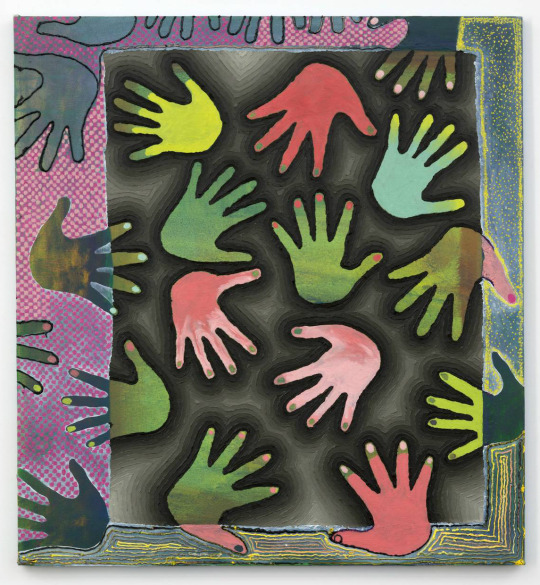
Be Confident in Your Abilities and Have Fun!
In any industry, self-doubt can creep in. Don’t let it get the best of you by learning to recognize the unique voice and vision that you bring to your work. Says Guevara: “The first step of owning your value is being able to see or acknowledge your strengths,” and suggests that having mentorship can help you reflect on your strengths especially if you may not be cognizant of them.
Louden has affirming advice for artists who are arts administrators: “We as artists have the ability to bounce back from failure like no other in any other field; we can easily create things from nothing and we can problem solve outside of our studio in much the same way as we do when we make things. The way artists think and just naturally do things in the world is unique from people in every other occupation. There is often a disconnect between artists making their work and applying those skills and talents elsewhere in their lives. Since I see artists valued beyond making their work, perhaps the real challenge is for them—us!—to recognize and apply our natural creative talents on a daily basis.”
O’Hanian adds: “People often don’t understand their professional values because in many cases we think we should be doing something else such as paint, sing, write or dance—things we really want to do. However, most people I’ve worked with have been very good at their jobs, whether they know it or not.”
Haggag highly recommends that everyone follow Picard Tips on Twitter. “Wow! I stumbled on them a few months ago and had no idea how badly I needed Star Trek’s retired admiral Jean-Luc Picard’s management tweets in my life. He recently tweeted ‘No one can relax around Dr. Jekyll after they have met Mr. Hyde.’ In my management experience, has that been true? Absolutely. Or ‘Once all their basic needs are taken care of, crew members are motivated by the meaningfulness of their work.’ Like, yes! Gospel!”
In Closing
Kristy Edmunds, Executive and Artistic Director for UCLA’s Center for the Art of Performance (CAP UCLA) and the inaugural recipient of United States Artists’ Berresford Prize, provided us with inspiring words to illustrate her belief in arts administrators as change-makers. We’re closing things out with a stanza that we hope propels you forward in your day and in your career:
“Press on, press on, press on!
Our cultural charge isn’t fleeting, of this we are certain indeed.
Your hand on the wheel is impressive and furtive persistence is key.
Press on through the standard of measures. Press on through the spreadsheets and sing!
Press on (oh press on) we are counting on you…to care for the cause thus imbued.”
-Amy Aronoff, Senior Communications Officer
Arts administrators in the five boroughs of New York City and surrounding metropolitan area are encouraged to apply to participate in our Emerging Leaders Program 2020. Free of charge to selected participants, the initiative provides leadership training for arts administrators over nine months. Our core objective is to help arts administrators discover, identify, and develop their personal motivation and individual competencies as leaders while exploring the attributes and themes of arts leadership.
This post was inspired by “The Artist’s Creed: 10 Guiding Principles for Your Arts Career.” Published in 2019, it provided empowering advice for artists, distilled from people we admire.
Images: Jenny Kemp (Fellow in Painting ’15), Breach, 2015, gouache on paper; Christie Neptune (Fellow in Interdisciplinary Work ’18), Pulling At My Labels, 2016, single-channel video; and Paul DeMuro (Fellow in Painting ’15), Nailz, 2013, oil on canvas

